On a crisp, windy day in March, 17-year-old Norman Garcia-Lopez tries to coax a donkey and a herd of 14 sheep from a fenced yard out to open pasture. “Come on, Miss Easter,” he says, holding a shallow bowl of food under the donkey’s nose. She steps through the door in the chain-link fence, and her fleecy charges follow soon after, bleating.
Garcia-Lopez isn’t on a typical farm. Surrounded by tall fences and razor wire, he and the group of high-school-aged young men affiliated with the nonprofit Growing Change are farming in an abandoned prison in rural Wagram, North Carolina. Since 2011, this group has been working to flip the Scotland Correctional Center — a facility decommissioned in 2001 and subsequently left to decay — into a sustainable farm and education center. They’re leasing the property at no cost from the state’s Department of Public Safety.
During its first several years in existence, Growing Change engaged young men who were on intensive juvenile probation and had been kicked out of their schools and homes. But after 2016, the young people involved decided to change the eligibility requirements for future participants. Now, they welcome their peers facing chaos at home, failure at school, trouble with mental health or substance abuse, and involvement with the criminal justice system. Many are also minorities or possess multiple ethnic identities in a country where racism and xenophobia are rampant.
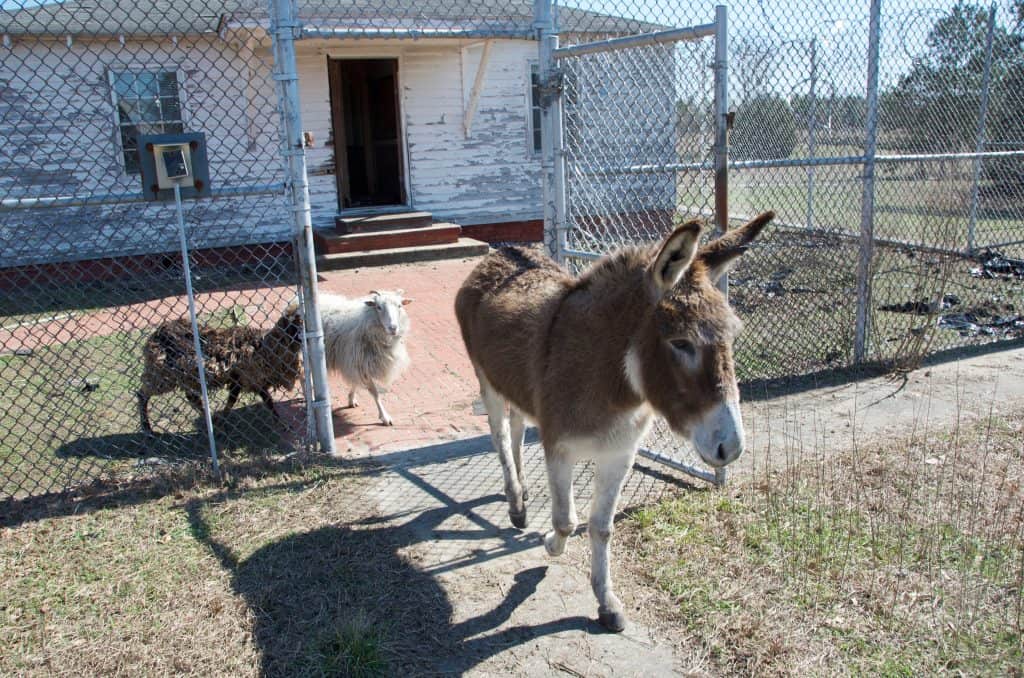
Designed to help teens avoid the criminal justice system, which disproportionately imprisons people of color, the program provides the young men with mental health treatment and the chance to develop workplace skills and a sense of self-efficacy, or the idea they can get from one point to another if they have a plan.
“These are the young men on which we build our adult prisons,” says Growing Change Founder and Executive Director Noran Sanford. Being locked up as a kid is one of the most damaging, opportunity-stripping experiences a person can have, he says. “As a clinician, as a social worker, as a mental health therapist, [I can tell you] it is one of the greatest risk factors in nearly every problem we’re dealing with today in our adult population.”
In his prison-flip work, Sanford has his sights set on a number of problems at once: the high number of young people entering the criminal justice system; the absence of job opportunities for veterans; the decline in small, independent farmers in the area; residents’ lack of access to local, sustainable food; and the health disparities between urban and rural areas.
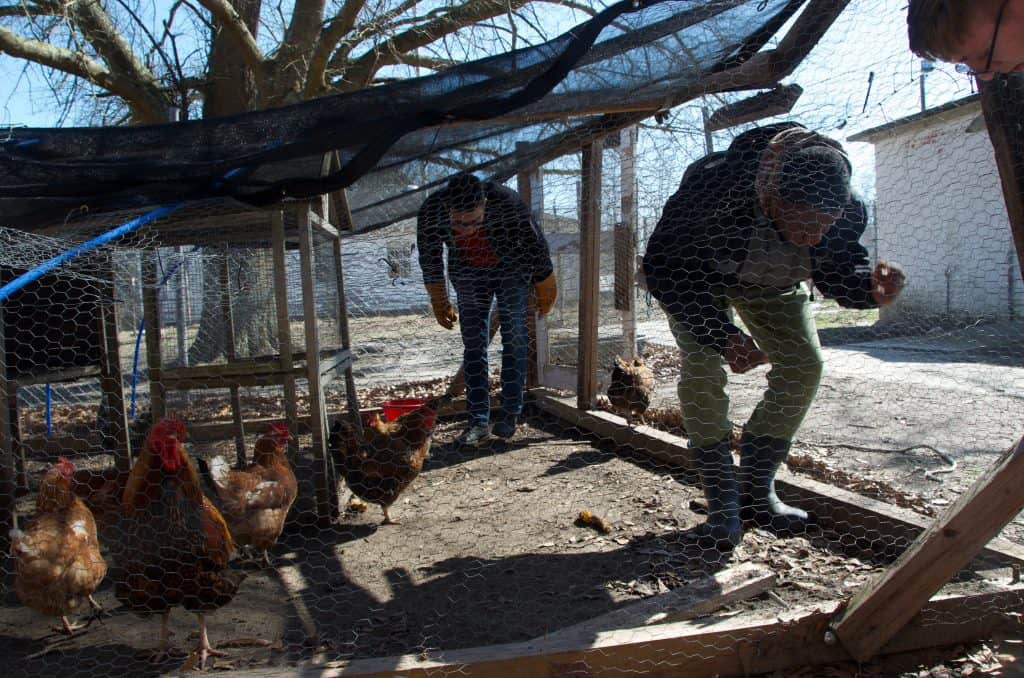
Scotland County Commissioner Carol McCall, a Growing Change board member and retired social worker, appreciates the intersectionality of the project. “The vision to take something discarded, unsightly, and unproductive and turn it into a working organization that serves a variety of purposes is unprecedented,” she says. “I’m really proud it’s happening right here in my own county.”
A wakeup call at a funeral
Growing Change serves three counties near the southern border of North Carolina in the eastern part of the state. The area is extremely diverse, home to equal parts Native American (primarily members of the Lumbee Tribe), Black, and white residents.
It is also extremely poor: More than a third of the people in the city of Lumberton, located in Robeson County, live below the poverty line; the county’s median household income is $33,700; and approximately 36 percent of the population is on Medicaid, compared with 18 percent nationally. Additionally, 21 percent of the people in Robeson County and 25 percent of the people in Scotland County experience food insecurity.
Compounding matters, these two counties had the worst health rankings in the state in 2019, making residents especially vulnerable to Covid-19. While Scotland County has not been too heavily hit by the virus yet, as of press time Robeson ranks among the top 10 counties in the state for infections, with case numbers on the rise. Because several of the Growing Change youth have underlying respiratory conditions, the group is careful to observe safety protocols — like working in small groups and pausing operations if someone close to them is tested for the virus (which has happened four times so far).
Crushed by negative news?
Sign up for the Reasons to be Cheerful newsletter.A tall, thin white man in his early fifties with a long, graying ponytail, Sanford grew up in the area and was working as a social worker and mental health therapist for youth and families in the juvenile justice system when he received an unexpected wakeup call in 2009. A middle-schooler he’d been working with — who was smart, good with people and one of the best running backs Sanford had ever seen — was killed in a gang-related incident.
“I had to be honest with myself that the system had not done everything it could do, that I had not done everything I could do,” says Sanford. As a person of faith, he began to pray and spend structured time thinking about what he and the system could do differently.
At the same time, the old Scotland Correctional Center in Wagram, which he’d driven by dozens of times without considering, began to rise in his awareness. He learned that, up until the 1970s, North Carolina had made heavy use of inmates sentenced to chain gangs, including those housed at the Wagram prison, to build the state’s highways. Most of these prisoners were Black, and many had only been convicted of minor crimes. In 1979, North Carolina had more prisons and the highest incarceration rate of any state in the country.
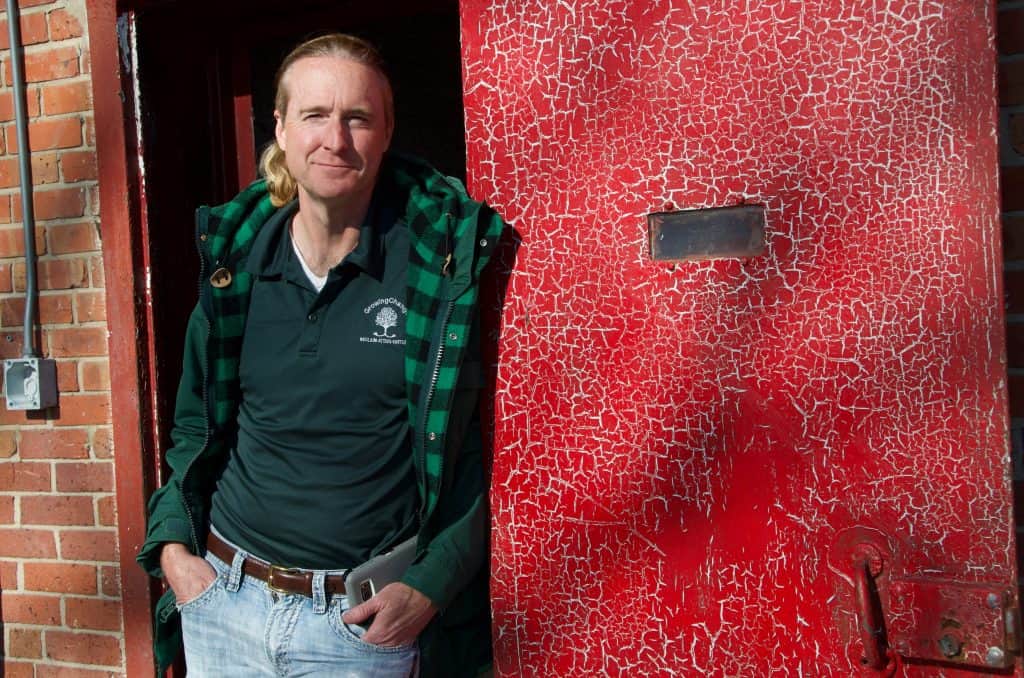
When Sanford presented his idea of reclaiming the abandoned property, many of the young people he worked with thought he was “kind of kooky,” remembers Terrence Smith, who was part of the first cohort of 12 and is now the other salaried employee of Growing Change.
But once Sanford walked the young men through the property, handed them the keys and asked them, “What do we do with this?” they grew excited about the possibilities, Smith says.
Instilling hope in people and place
In addition to providing off-site therapy, Growing Change puts youth in charge of creating and carrying out a collective vision for the former prison, situated on a 67-acre parcel a couple miles outside Wagram’s tiny downtown.
Although the master plan will take years to achieve, a number of elements are already in place: The current nine participants are keeping bees, rotationally grazing a herd of sheep they will use for wool and meat, caring for a flock of laying hens, composting food waste, tending a garden with organic methods, and managing vermiculture and soldier fly operations.
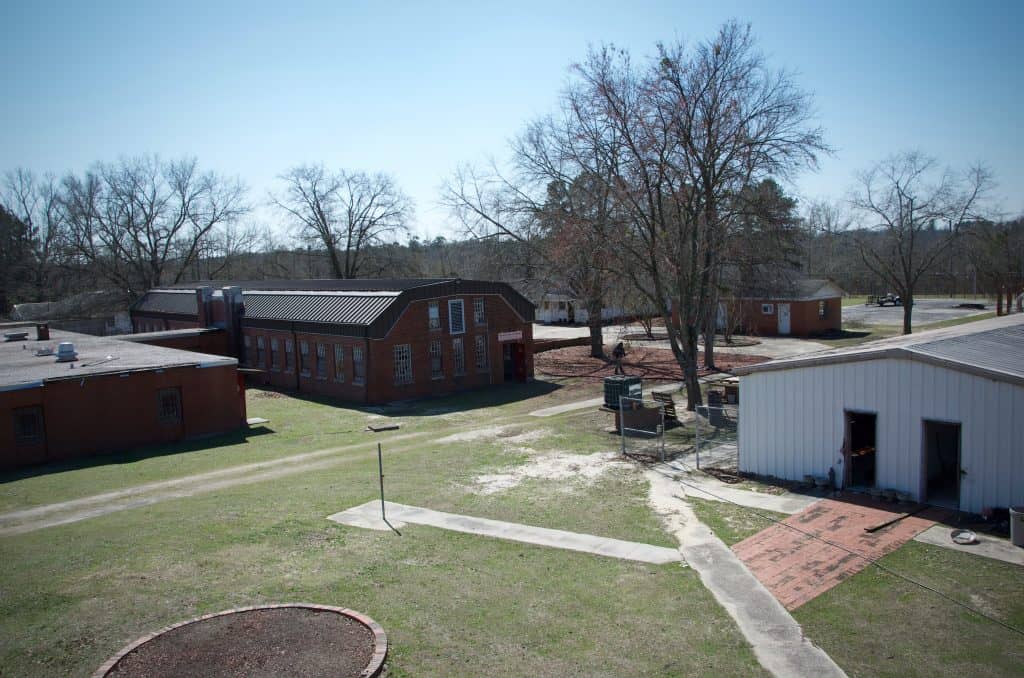
Down the road, they hope to create aquaponic tanks and cultivate mushrooms (in former prison cells) and introduce a certified community kitchen (in the galley), a prison history museum (in the barracks), a climbing wall (up a guard tower), a recording studio (in the freestanding hot box building), and staff quarters and office space.
A central focus of their efforts is giving back to their community. During the first few years, participants tended a garden and distributed free boxes of produce and flowers to their food-insecure neighbors. And when the pandemic hit in March, the youth partnered with various agencies including Carolina Farm Stewardship to distribute boxes of food to people in need, including restaurant workers and furloughed hospital staff. They also planted a new garden on the former prison softball field that they will harvest in late summer and donate.
This direct service allows outsiders to begin seeing the young men differently, Sanford explains. He also arranges opportunities for them to present the prison-flip model they’re developing to university and government leaders across North Carolina, as well as at places like the Massachusetts Institute of Technology.
“What traditional therapy often doesn’t touch is … the community,” Sanford says. “There has to be some kind of social efficacy developed, that [community members] can have confidence that these young people can change. They have to make a place for them at the table.”
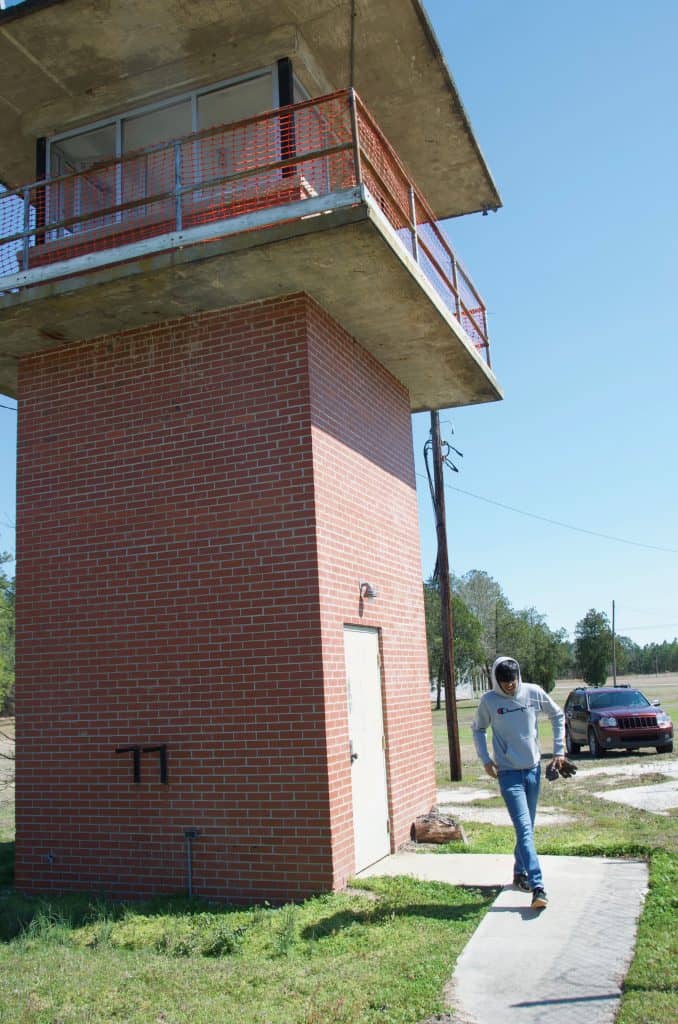
Admittedly, Growing Change is ambitious. But it all fits in to how Sanford — who has won multiple awards and fellowships over the years, including the Soros Justice Fellowship in 2015 and the Ashoka Fellowship in 2016 — sets out to solve problems. “This is a systems approach,” he says. “I’m a systems practitioner, really.”
Davon Goodwin, an Army-veteran-turned-farmer who became involved with Growing Change after getting injured in Afghanistan in 2010, sees agriculture as a perfect fit for the youth, many of whom suffer from post-traumatic stress disorder (PTSD) like he does. Farming can provide a refuge and sense of purpose for people who are struggling with trauma, he says.
“I don’t know what it is about soil, but it changes you — it humbles you, and it brings a sense of calm that the youth need,” says Goodwin, who sits on the Growing Change board, runs the Sandhills AGInnovation Center and credits farming for setting him on a good path during a dark time. “When you’re growing food, there’s fellowship that happens that doesn’t happen anywhere else.”
In addition to rehabilitating the youth and transforming the dark, oppressive space in Scotland County into something beneficial, Sanford hopes to provide a model for other places looking to do the same. Across the U.S., more than 300 prisons have been decommissioned, including 62 in North Carolina alone. Most are in poor, rural areas and have closed because of the declining number of inmates in the U.S., the consolidation of many smaller prisons into fewer larger ones, and, at least in North Carolina, Sanford says, a number of reforms affecting when people are sent to prison.
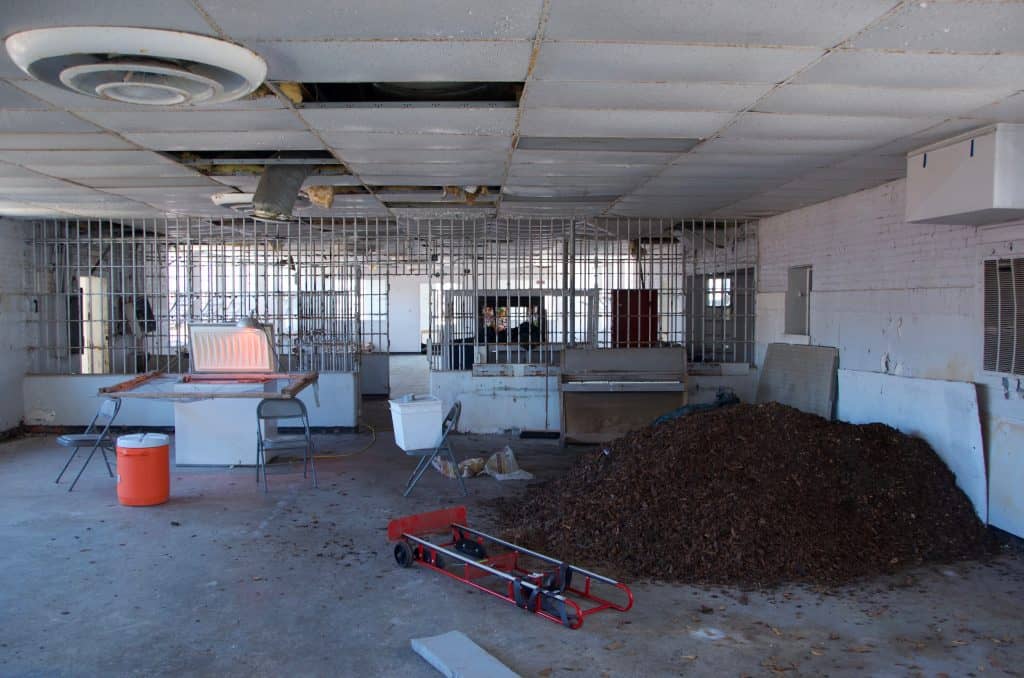
“At the core level, we are instilling hope,” Sanford continues. “When hope is gone, it creates a pretty vicious void that a lot of other grimmer things can get pulled into. And as low-wealth rural America is left further behind, then that vacuum is stronger. We’re breaking that stream.”
At work on the farm
After the released sheep settle into grazing, Garcia-Lopez heads back into the prison yard to start on another project, tying the chain-link gate shut behind him with a thick rope. A rooster crows.
“I’ve been here almost a year, and I’ve seen so much progress,” says the 17-year-old, wearing a black fleece jacket and blue jeans. “It’s neat seeing stuff coming together, even the small things.”
The teens, who are paid hourly, spend one dedicated day a week, plus additional work periods, on the farm. On this Saturday morning, multiple projects unfold across the flat yard and inside the brick barracks building full of steel-barred cells.
Over the past few weeks, the youth have built a minivan-sized chicken tractor out of wire and PVC pipe they salvaged from the prison drain field. Today, a few of them are reinforcing the joints with metal brackets so they can contain the chickens as they start grazing them behind the sheep. In a different corner of the yard, another group patches gaps in the chain-link fence so the roosters, who’ve been antagonizing the hens, can be put in their own “bachelor pad.” And inside the barracks, a third group modifies the aeration system they’ve built for the compost pile housed in a cell formerly used for solitary confinement.
The local cooperative extension and experts at the state’s two land-grant universities, N.C. State University (NCSU) and North Carolina Agricultural and Technical State University, have provided guidance and support through the entire project. Students at the NCSU School of Design helped craft the property’s master plan, and experts in topics like rotational grazing, mycology and vermiculture also guide the youth.
Inside the barracks, Terrence Smith leans over the deep freezer that has been repurposed as a worm bin for a vermicomposting project. Smith uses a hand rake to stir the dark soil, exposing a number of wriggling worms. “I put five pounds of bananas in here a few days ago, and they’ve eaten the crap out of them — there’s only the skins left!” he says, impressed.
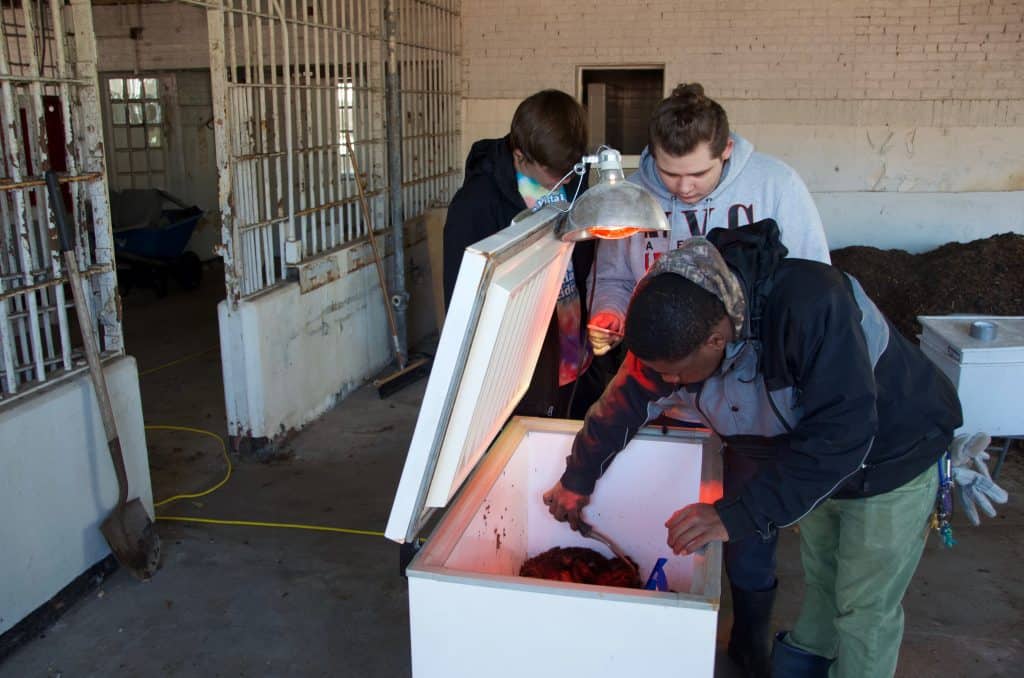
As the youth put the various elements of the massive project in place, Growing Change engages in a constant give-and-take with those around them. They receive around 600 pounds of discarded produce from the University of North Carolina at Pembroke (UNCP) each week; they redistribute the edible portions of that food to food banks, feed other scraps to the chickens and give the spoiled pieces to either the compost pile or the soldier flies, whose larvae they’re raising to help feed the animals.
In all they do, Sanford looks for ways to create revenue streams to help compensate the youth and pay for the program. The farm sells eggs and salad greens to a nearby university, and it plans to sell meat and wool from the sheep as well. Though the garden they’re tending this spring will supply free food to the community, they eventually plan to grow the ingredients for chowchow — a recipe that honors the various backgrounds of program participants: collards for the Black youth, tomatoes for the Native Americans, cabbage for the Scotch-Irish, and jalapeños for the Latinos — and offer the product for sale.
“Our county has many challenges,” Dr. Debby Hanmer, Growing Change board chair and founder of the sustainable agriculture program at the nearby UNCP. “I want us to be an example of what sustainable can look like, not just in agriculture, but in all things.”
‘They bring out a better side of me’
While large commodity farms dominate much of the landscape in this part of North Carolina, Garcia-Lopez, like most of the other teens involved, didn’t know much about farming when he became involved a year ago. “My first day, they were like, ‘What do you know about bees?’ and I was like, ‘Absolutely nothing!’” he says. He now helps oversee the beekeeping operation.
Michael “Fluffy” Adyson Strickland became involved two years ago and has also learned many new skills, but his primary charge is to tame the guard donkey, Miss Easter, who was unhandled and extremely skittish when she arrived in 2018.
“I saw her, and I clicked with her — I was one of the only people who could touch her at one point in time,” says the 16-year-old, who wears a hoody and rubber boots and has his thick hair tied up in a knot. “Once I started rubbing her back, Noran was like, ‘Do you want to start taming her?’” Eventually, the program hopes to be able to allow children in the community to pet the donkey.
“When I got here, it opened my eyes,” says Strickland. He might like to pursue environmental science, with the aim of being able to help other people care for the environment, he says.
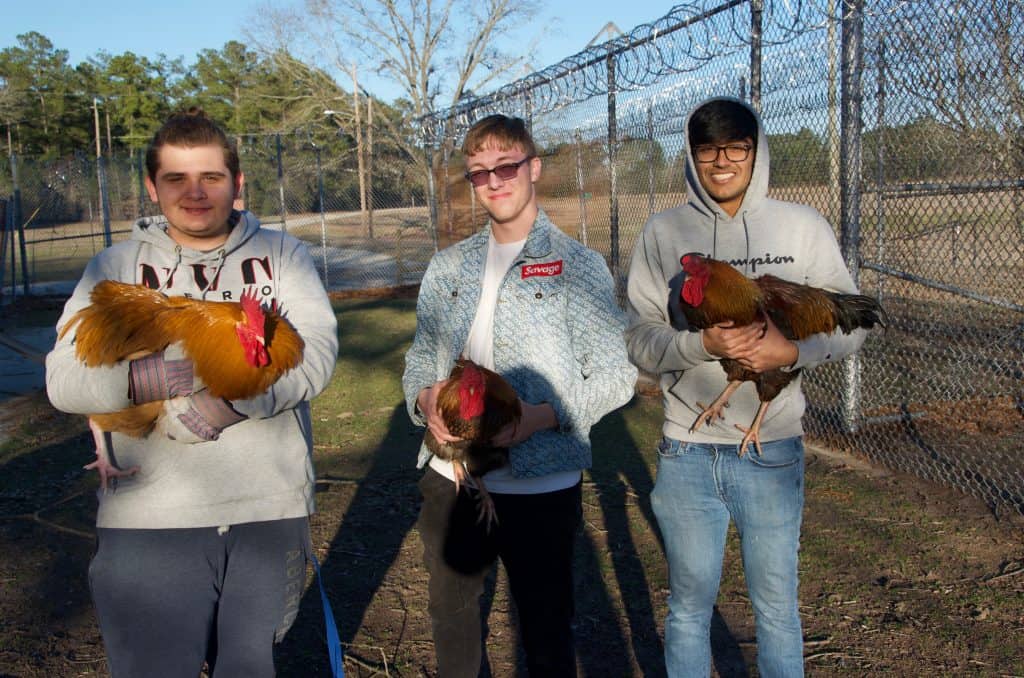
The most powerful aspect of the program for Ryan Morin, a 15-year-old with side-swept hair and a tie-dye T-shirt, has been the relationships he’s developed with the other participants. “We were all in a compromised position [when we arrived], which left us vulnerable,” he says. “The first people we encountered, we found a special bond with them. They bring out a better side of me; they have shown me who I really am and what I can become.”
So far, the program has proven effective at its central goal of keeping young men out of prison—for the 24 youth involved over the five-year period from 2011 to 2016, an internal study found it was 92 percent effective at preventing recidivism and adult incarceration.
Some say that the ultimate impact can’t be determined until years from now, once the “troubled” youth have grown up more and charted their own paths. But Sanford says he has seen noteworthy changes. “You see youth who are learning how to work successfully; they are being able to get control of substance abuse patterns; they are working through and stabilizing some of their interpersonal relationships … And you see some healing within some family systems.” Additionally, Sanford says, participants have gone on to attend college, join the military and secure steady employment.
A decade after getting involved at the age of 14, Smith is a shining example. He grew up in an abusive household and, after being put on probation in seventh grade, was ordered to work with Sanford as a therapist.
The program “helped me stay grounded enough to complete high school — and look forward to something afterward,” Smith says. It also taught him to carry himself in a way that people respect and respond to.
Creating a model to share
In hopes of helping others replicate the model, Sanford is in the process of creating an open-source prison-flipping model with step-by-step instructions and online resources. He is planning to distribute it to each of the 300 communities with a closed prison later this year via the national cooperative extension system.
Sanford hopes to help others in rural America convert spaces meant to confine and punish into spaces that nourish and rehabilitate. “If you look at a lot of these issues, especially around incarceration, it’s [been] a 90 percent urban conversation,” says Sanford. He wants to see that change.
At end of the day, the young people wrap up their projects and gather in the area being secured for the roosters. Strickland and two other young men retrieve the orange birds from their pens and set them down; two immediately begin to fight, fluffing their feathers and jumping toward each other. The young men hover, tempted to intervene. “Let ’em go,” Sanford says. “They’ve got to work this out.”
This story originally appeared in Civil Eats. It is part of the SoJo Exchange of COVID-19 stories from the Solutions Journalism Network, a nonprofit organization dedicated to rigorous reporting about responses to social problems.





